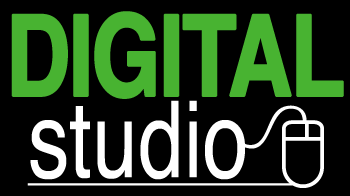Reflection
The two questions that have guided our work for this piece with regard to the FSU Digital Studio and its sustainability have been
- (1) what is the Digital Studio’s history? and
- (2) what is its future?
Looking Back
We hear in the video about the mission of the Studio, which has remained relatively stable throughout our first four years: to serve students and faculty and to provide them with a space where they can work on and get assistance with digital and multimodal projects. By serving them, we mean helping them develop as multimodal composers. Rory mentions Selber’s three kinds of literacies that can serve as guideposts for our interactions with students and faculty. Initially this meant students and faculty in the English department, but as we’ve grown so too has our reach within the university community. With our second location in the more centralized Johnston building, the Studio’s customer-base has grown not only in size but also in disciplinary diversity. In the fall 2012 semester, one year after Johnston’s opening, 67% of the 138 unique clients who made appointments with the Williams Studio reported themselves as English majors, whereas only 56% of those who visited the Johnston Studio did. In that same semester, there were 25 different majors (plus two ‘other’) represented in the Williams location, while in Johnston 38 were represented (plus six ‘other’), amounting to a 50% increase in disciplinary diversity.
Looking Ahead
We anticipate that responding to this diversifying growth, which is still in a state of acceleration, will be our next major administrative challenge (among other smaller ones, of course). Any fitting response will follow inquiry not only into who is using the space (students? faculty? classes? student orgs? etc.) and how they are using it but also how they could use it or want to use it. In other words, the growth of the Studio is and should be recursive: among the services we offer is the opportunity for new services according to a given exigence or set of exigencies. Such recursion requires both openness on our parts to what needs may arise and an inquisitiveness about what Dickie Selfe calls “multimodal workflow.” What he says about the broader field can also be said for our local operation:
We need to explore the multimodal workflow of the disciplines, students, and professionals around us. Why? Because we (English studies faculty) know so little about the complex working conditions of multimodal communicators across the disciplines. Without this cumulative knowledge, we cannot anticipate the needs of academic or professional learner/communicators, much less apply our humanistic attitudes, critical approaches, and ethical concerns to those needs and practices. (113)
On the one hand, exploring the workflow is an immediate necessity for managing the FSU Digital Studios and providing the best services within our local constraints. That is, we understand the workflow, then provide the service. On the other, and as Yancey explains in the video on this page, the Studio (and indeed other next-gen learning spaces), and the composing work that takes place therein, is ripe for studies whose findings could have broad implications.
Looking Around
Thus, the challenge for our Studio is one shared with the field: to study the multimodal composition that happens in these spaces is to better understand that composition and to create new opportunities for better preparation to support it. The first step for the field, then, is to uncover the spaces that already exist so that they can be studied – which is what makes the collection of which this chapter is a part so exciting.
In the meantime, we return our attention to the FSU Digital Studio. While we’re comfortable with the version of the Studio’s history that we’ve told – in that we think we’ve answered that question as comprehensively as possible given the constraints – what its future is remains less clear to us. Questions that we’ve circulated among ourselves include:
- What is/will be the relationship between the Reading-Writing Center (RWC) and the Digital Studio? What should it be?
- What particular services, equipment, software, infrastructure are needed but that we do not currently provide?
- How can tutor training be improved, and what should its focus be? Technical functionality? Rhetorical concepts? Client service? A combination of all three? Then what should be emphasized?
- How much technical expertise should be expected of new incoming tutors?
- Given the variance of that expertise, can we maintain a standard offering of expertise to our clients year in, year out?
- Is the current staffing model (i.e., English graduate TA’s who may split time between the Studio and the RWC) sustainable? Should it be changed, and if so, how?
- How much flexibility can we feasibly maintain in the services we offer?
- Will the Studio continue to expand its physical presence on campus? Should it?
- Can we offer too much?
- Tutors from other disciplines? Other kinds of extradisciplinary involvement?
One final note that we wanted to be sure to include here is that with the exception of the camera used to record the interview with Yancey, this webtext was created entirely with tools and resources available in the Studio.







